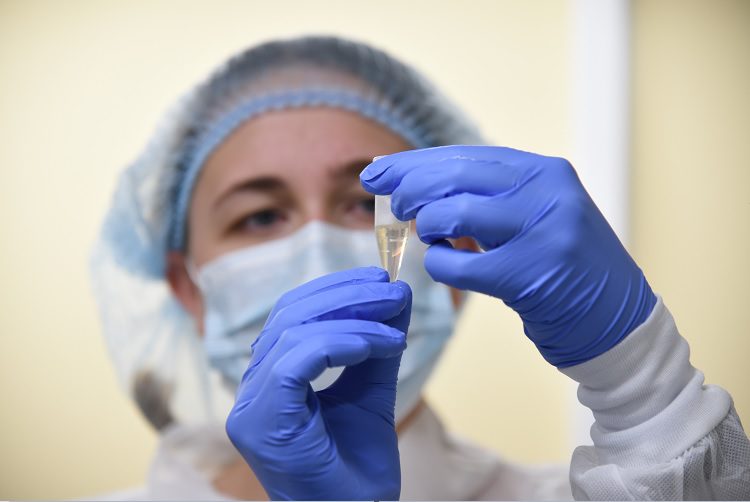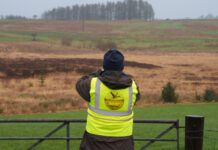
In a bid to validate offshore fish environmental DNA (eDNA) survey methods, a new project has been launched – said to be the first of its kind to trial the use of eDNA to improve survey methods for offshore wind farm environmental impact assessments.
Michelle Elliott, the Senior Environmental Consultant leading the project on behalf of renewable energy consultancy and service provider Natural Power, said: “There is significant evidence for eDNA providing robust data on fish diversity in nearshore environments, but very few studies exist further offshore, and to our knowledge, there has been no work investigating eDNA methods for fish ecology assessment near commercial offshore wind farms. We believe this research has huge potential benefits and will lead to marketable opportunities within the marine energy sector.”
Described as a non-invasive sampling technique, eDNA uses samples that can be collected from a wide range of vessels and has the potential to deliver auditable, robust data, potentially replacing more destructive methods.
One of the project partners, NatureMetrics, presents itself as a pioneer in using environmental eDNA to identify fish species around the world. This ground-breaking technique is based on the fact that all species shed waste products, skin and tissue cells into the seawater – and they all contain the underlying DNA of the fish. Collecting and filtering a few litres of seawater concentrates the DNA, which can then be processed in the NatureMetrics lab to identify all the different fish species present. It means there is no need to physically catch or even see the fish to know they are there. It is a much quicker, cheaper, safer, scalable, and more reliable approach than traditional survey techniques.
Dr Samuel Stanton, Global Sector Head, Marine and Energy at NatureMetrics, said: “I’m looking forward to showing how eDNA methods can help companies in the marine energy sector monitor nature cheaply, quickly, repeatably, and at large scale. We have already successfully demonstrated that eDNA will detect more fish species than conventional net survey methods for a coastal fish survey in Sweden. I am confident our technology can help renewable energy companies better manage nature-related risks and transition to a nature positive economy.”
Overall, this method should help to reduce the costs of offshore wind developments; reducing overall cost of energy production whilst also minimising the environmental impact, and therefore helping to meet the UK’s 2050 net-zero target.
In support of the initiative, EDF Renewables is providing access to the Blyth Offshore Demonstrator (BOD) for the research project to take place.
BOD, which is operated by EDF Renewables, has already validated innovative methods at the site through the first successful float and submerge gravity base foundations used on an offshore wind farm. Natural Power has provided a range of services at the site throughout the last decade, including pre and post-consent fish ecological surveys.
Scott Sutherland, Head of Offshore at EDF Renewables, said: “We believe that eDNA techniques have the potential to reduce barriers in consenting for offshore wind farm projects in the future through more targeted baseline data collection, mitigation, and monitoring measures. If such techniques can be validated within the offshore environment as a viable alternative to traditional fish survey techniques, it may have significant benefits to both the developer and stakeholder communities, and we are eager to glean the insights from this valuable research work.”
With support from EDF Renewables, and utilising NatureMetrics’ eDNA experts, the research project will commence in March 2022. Surveys will be conducted using traditional fish trawling methods as well as eDNA sampling around the BOD site. Comparison of the eDNA results with concurrent trawl data and with historical fish community data will be undertaken providing a robust assessment and validation of the technique.
Dr Samuel Stanton added: “We’re delighted to be working alongside Natural Power and EDF Renewables to help advance methods and insights, and believe it offers a real-world development opportunity for applying eDNA techniques in the offshore renewables industry.”
The team predicts a range of additional environmental benefits from this project, such as the collection of data on key marine mammal species, like the Minke whale, where information on seasonal occurrences is not well understood due to their inconspicuous nature. This can be used in wider ecological monitoring and to better inform marine spatial planning for offshore energy production and other sectors.
The outcome of this research will form a scientific paper and formal public presentation of findings alongside recommendations for future commercial use.
The 18-month project has received an innovation grant of £33, 918, from the Offshore Wind Growth Partnership
(OWGP). The grant covers 50% of the total project cost with Natural Power and NatureMetrics providing significant in-kind contributions and EDF Renewables contributing monetary funding.






